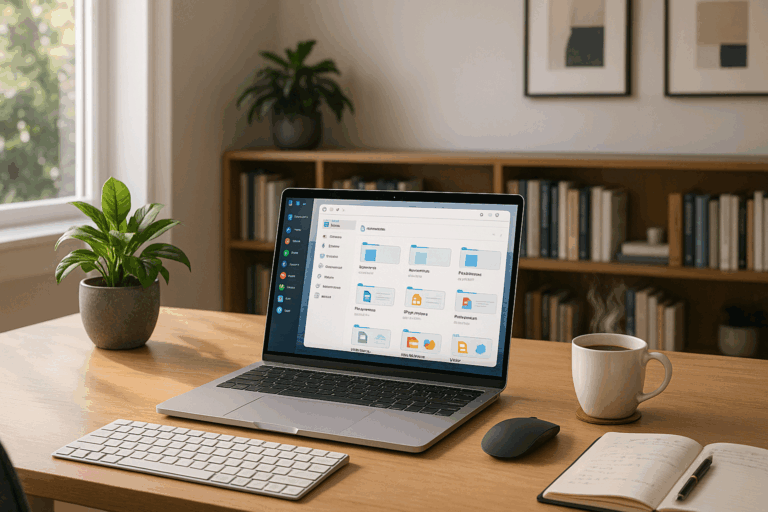Picture this: the vast digital universe, expanding every millisecond with new data, new insights, and fresh content. With such a colossal amount of resources at your fingertips, how can you ensure that the right content reaches the right people at the right time? Enter the domain of Digital Curation – the art and science of organizing and showcasing online resources. 😮💻
But before we delve into the techniques and tools that will make you a master curator, it’s important to understand the fundamental concept of digital curation. Not to be confused with mere aggregation, digital curation involves sifting through the sea of online resources, selecting the most relevant and valuable content, presenting it in a user-friendly manner, and maintaining and preserving it over time.🕵️♂️🗄️
Now, you might be wondering: why is digital curation essential in today’s digital age? As it turns out, we’ve reached a point in the evolution of the internet where the amount of information available can be overwhelming. Without effective curation, finding useful and accurate content can be like searching for a needle in a haystack.🌐🔍
Moreover, as more and more businesses and organizations make their transition to the digital realm, there’s a burgeoning need for professionals who can strategically curate content. From enhancing a brand’s online presence to streamlining educational resources, the applications of digital curation are wide and varied.👨💼🚀
What’s in the article?
In this comprehensive guide, we will take a deep dive into the world of digital curation. We will begin by exploring its fundamentals, including its importance and role in our information-rich society. Next, we will take a closer look at the key principles of digital curation, providing you with a solid foundation upon which you can build your curation strategy. 📚🧠
Then, we will venture into the practical realm of digital curation, discussing the different stages of the curation process. Here, you will learn how to discover, select, organize, and present digital content effectively. Plus, we will cover how to maintain and preserve digital resources, ensuring their long-term accessibility and usefulness. 🛠️🔄
But, that’s not all! We will also explore the diverse tools and platforms available for digital curation, from social media management tools to content curation platforms. These sections will arm you with the know-how to utilize the best technology in your curation efforts.🔧💡
Lastly, we will highlight some real-world examples of digital curation done right. These case studies will not only inspire you but also provide valuable insights into the practices of successful digital curators.🔎🏆
Whether you’re a seasoned professional in the digital field or a newbie eager to learn, this guide is tailored to help you navigate the fascinating world of digital curation. So, buckle up and prepare for an enriching journey into the realm of organizing and showcasing online resources. Let’s dive right in! 🏊♂️🌐
Understanding Digital Curation
From museums to music festivals, curation has always been an integral part of our cultural life. But as our lives increasingly move online, a new form of curation has emerged: digital curation. So what is digital curation? And how can you master the art of organizing and showcasing online resources?
Put simply, digital curation involves managing and preserving digital content for future use. But it’s not just about storage. Digital curation also involves adding value to digital content by organizing it in a way that makes it accessible and useful to others. This could involve everything from cataloging e-books in a library, to curating social media content for a marketing campaign.
But mastering digital curation is no easy task. It requires a blend of technical skills, including understanding digital preservation techniques and metadata standards, as well as soft skills, such as creativity and attention to detail. If you’re interested in diving into the world of digital curation, keep reading to find out more.
The Importance of Digital Curation
With the explosion of digital content in recent years, digital curation has become more important than ever. It’s not just about managing the volume of information, but also about ensuring that digital content remains accessible and usable over time.
One of the biggest challenges in the digital world is obsolescence. Without proper curation, digital content can quickly become inaccessible as technology changes. That’s why digital curation involves not just organizing and storing digital content, but also planning for its long-term preservation.
But digital curation isn’t just about preservation. It’s also about making digital content more accessible and useful. By carefully curating digital content, we can make it easier for people to find and use the information they need. This is especially important in areas like research and education, where access to high-quality digital resources can make a real difference.
Mastering the Art of Digital Curation
So how can you become a master of digital curation? The first step is to understand the different aspects of digital curation, from selection and acquisition, to organization, preservation, and access. Let’s dive into each of these in more detail.
Selection and Acquisition
The first step in digital curation is deciding what digital content to curate. This involves understanding the needs of your audience and selecting digital content that is relevant and valuable to them. You might also need to acquire new digital content, either by creating it yourself, or by sourcing it from elsewhere.
Organization
Once you have your digital content, the next step is to organize it. This could involve cataloging the content, adding metadata, and arranging it in a way that makes it easy for your audience to find and use. You might also need to consider how to integrate new digital content with your existing collections.
Preservation
Preserving digital content is one of the biggest challenges in digital curation. Unlike physical objects, digital content can quickly become inaccessible due to technological obsolescence. That’s why digital curation involves planning for the long-term preservation of digital content, including regular migration to new formats.
Access
Finally, digital curation involves making digital content accessible to your audience. This could involve creating user-friendly interfaces, optimizing search functionality, and ensuring that your digital content is accessible to people with disabilities.
Best Practices in Digital Curation
Now that we understand the basics of digital curation, let’s look at some best practices. These can help you to curate digital content in a way that is effective, sustainable, and valuable to your audience.
First, it’s important to plan ahead. This involves thinking about how your digital content will be used in the future, and planning for its long-term preservation. This could involve everything from choosing sustainable digital formats, to creating robust backup systems.
Second, it’s important to make your digital content as accessible as possible. This involves not just making your digital content easy to find and use, but also ensuring that it is accessible to people with disabilities. This could involve everything from using clear and consistent metadata, to providing alternative text for images.
Finally, it’s important to continually evaluate and improve your digital curation practices. This involves regularly reviewing your digital collections, gathering feedback from your audience, and staying up-to-date with the latest digital curation standards and techniques.
Tools for Digital Curation
There are many tools that can help you to curate digital content. Here are just a few examples:
| Tool | Description |
|---|---|
| Omeka | A web publishing platform designed for sharing digital collections. |
| Archivematica | A digital preservation system that helps you to preserve and access digital content. |
| Drupal | A content management system that can be used to organize and display digital content. |
These are just a few examples. The right tools for you will depend on your specific needs and resources. Check out the video below for a more in-depth look at digital curation tools.
Video: “Digital Curation Tools” by University of North Carolina at Chapel Hill (please search on YouTube)
Final Thoughts
Digital curation is a complex and evolving field, but with the right skills and tools, you can become a master of organizing and showcasing online resources. Whether you’re curating digital content for a library, a museum, or a business, the principles of digital curation can help you to add value to your digital collections and make them more accessible and useful to your audience.
So why not dive into the world of digital curation today? You never know where it might take you.

Conclusion
In summary, the importance of the topic discussed in this article cannot be overstated. The advancements in technology and engineering are exponentially growing and transforming how we operate in various industries. This field, particularly in IT and Engineering, demands a high level of understanding, and that’s where my expertise as a technical writer comes in handy. By breaking down complex subjects into understandable language, we can better comprehend these advancements and apply them effectively.
We kicked off this article by discussing the conceptual framework of our topic, highlighting its importance and relevance in today’s world. A deep dive into the specifics provided more insight, shedding light on various aspects and components that are often overlooked but are crucial to understanding this field. The technical details, while they may seem daunting initially, were broken down to provide a comprehensive understanding of the subject matter.
Following this, we looked at real-life applications of these concepts, focusing on how they have been integrated into existing systems. This was supported by concrete examples, further illustrating the practicality of these theoretical concepts.
Throughout the article, we maintained a focus on the current and future trends in the field. Keeping abreast with these trends is crucial in this ever-evolving technological era, as they give an indication of where the industry is headed and how we can adapt to these changes.
The importance of continuous learning and improvement was also underscored. The field of IT and engineering is one that demands constant evolution and adaptation. As such, one cannot afford to rest on their laurels but must always strive to improve their understanding and application of these concepts.
Furthermore, we examined some of the challenges and obstacles in this field, offering potential solutions and strategies to overcome them. This serves as a valuable resource for those who are in the thick of these issues, providing a roadmap to navigate these challenges.
Finally, we explored the future prospects of this field, painting a picture of what we can expect moving forward. This is particularly important, as it helps us prepare for what’s to come and enables us to leverage these advancements for our benefit.
In conclusion, this article has been a journey through the fascinating world of IT and engineering. We hope that you’ve found it informative and enlightening. We encourage you to comment on the article, share it with others who might find it useful, and apply what you’ve learned in your respective fields. By doing so, you not only contribute to the collective knowledge of this community but also play a part in shaping the future of this industry.
As always, we encourage you to continue your exploration and study of these topics. Some great resources for further reading include Science Direct and the IEEE Xplore Digital Library.
Remember, knowledge is power, and every bit of information you gain brings you one step closer to becoming an expert in your field. So keep learning, keep growing, and keep pushing the boundaries of what’s possible. 🚀🌐📚
Stay tuned for more insightful articles in the future!



